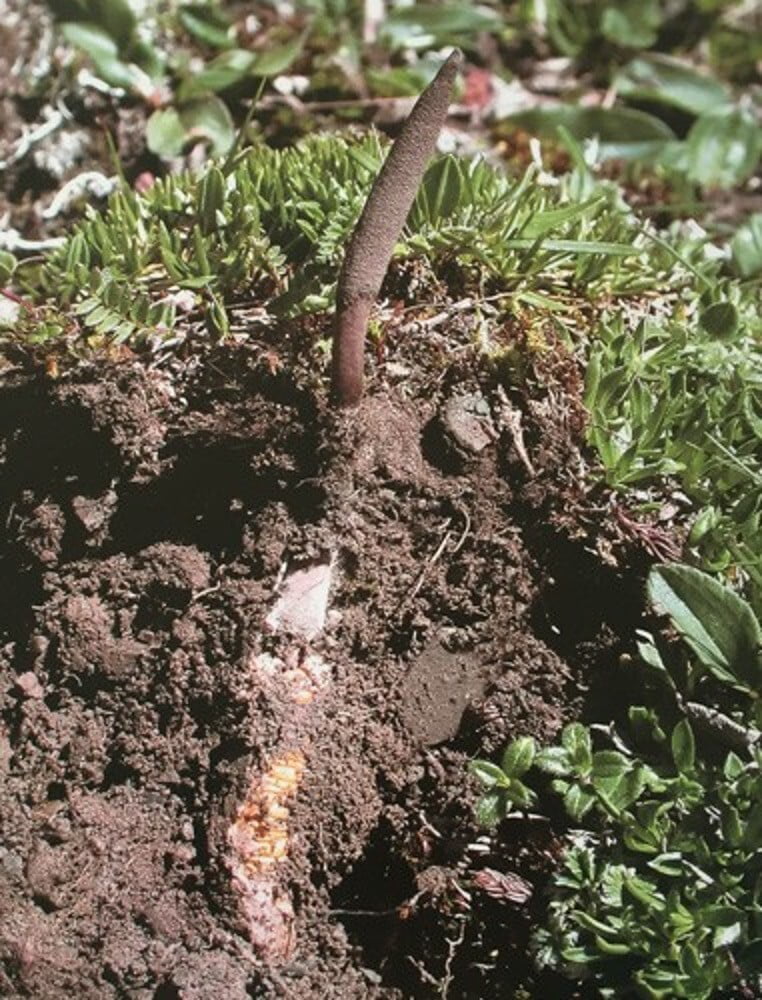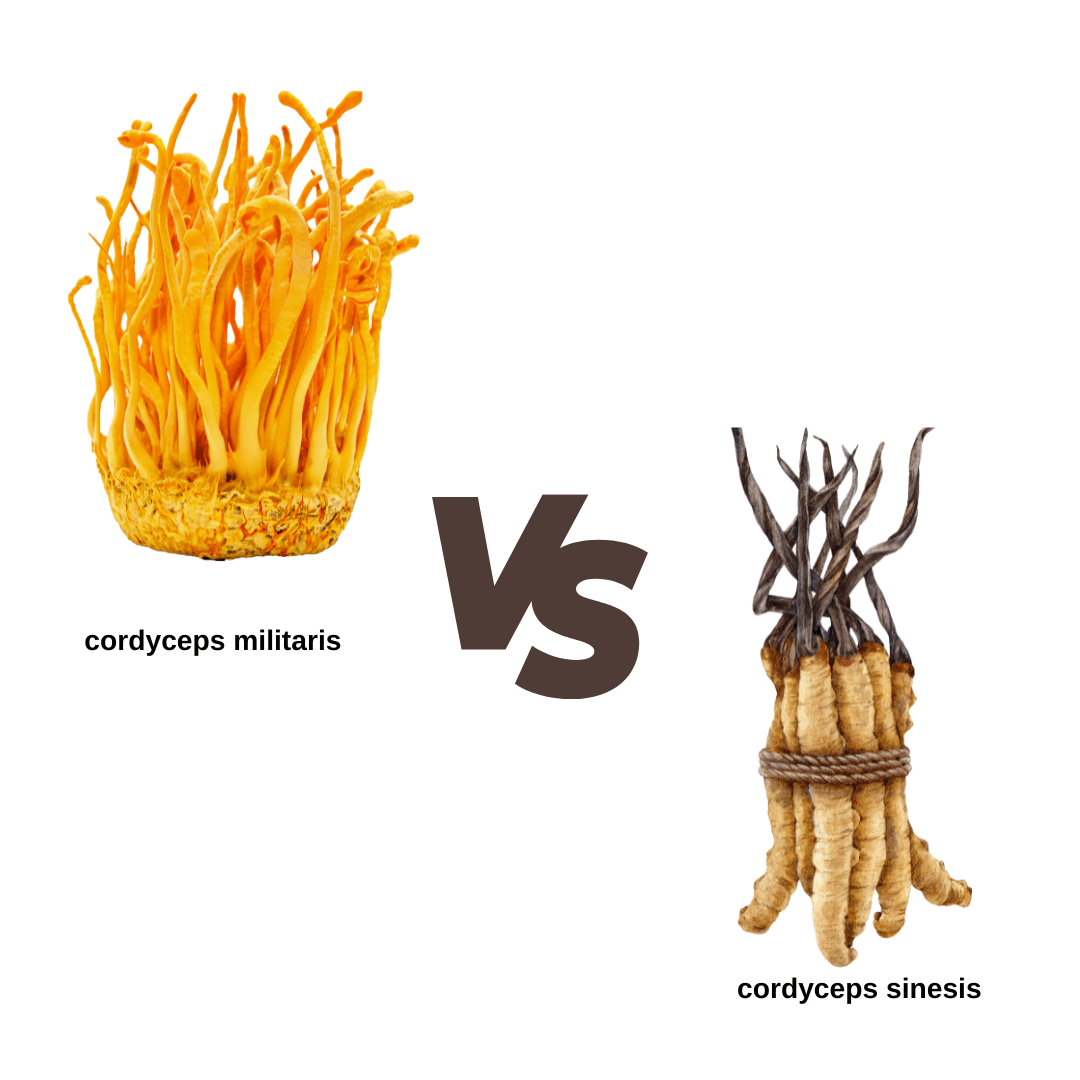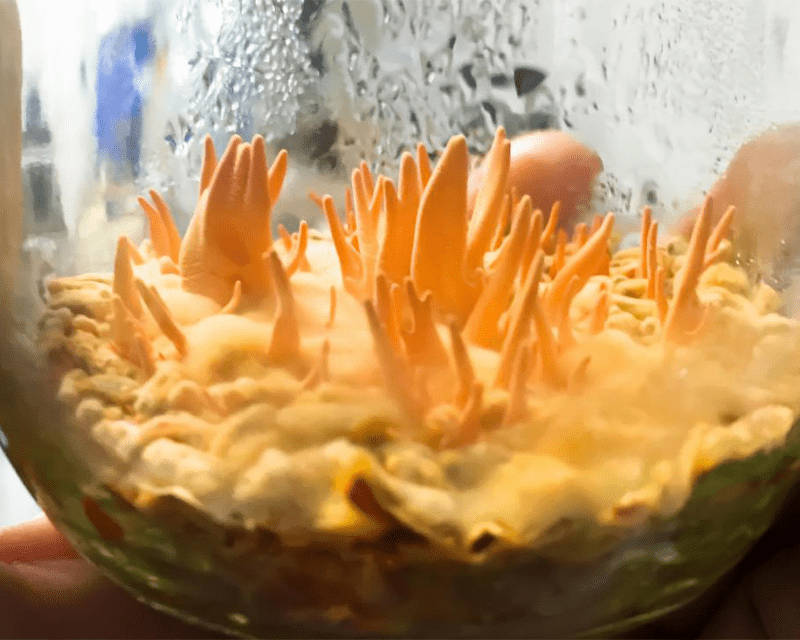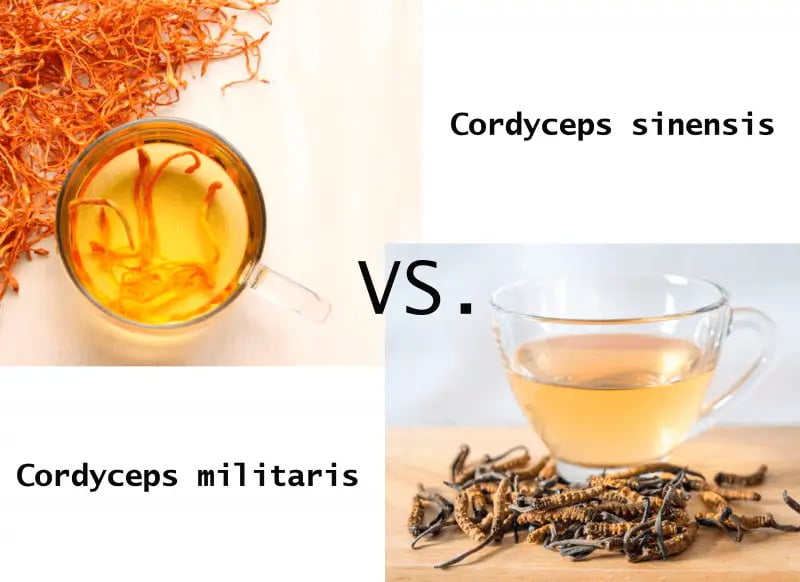Benefits of Cordyceps Militaris:
- Cordyceps militaris, a species of parasitic fungi, has gained attention for its potential health benefits.
- This fungus is believed to possess properties that may enhance athletic performance and stamina.
- Some studies suggest that Cordyceps militaris can aid in increasing oxygen utilization, which could be beneficial for individuals engaging in physical activities.
- Additionally, Cordyceps militaris is thought to have immune-boosting properties.
- It may help regulate the immune system, potentially leading to a reduced risk of infections and improved overall health.
- Some research also indicates that this fungus could possess antioxidant properties, which may help combat oxidative stress in the body.
Benefits of Cordyceps Sinensis:
- Cordyceps Sinensis is a highly valued medicinal mushroom known for its potential health benefits.
- One of the key advantages of consuming Cordyceps Sinensis is its ability to enhance athletic performance and stamina.
- By improving oxygen utilization and increasing ATP production in the body, this mushroom can aid in boosting energy levels and endurance during physical activities.
- Moreover, Cordyceps Sinensis is renowned for its immune-boosting properties.
- Its rich content of bioactive compounds such as polysaccharides and cordycepin can help strengthen the immune system, making the body more resilient to infections and illnesses.
- Regular consumption of Cordyceps Sinensis may contribute to overall well-being and support the body's natural defenses against pathogens.
Differences in Nutritional Content:
Cordyceps Militaris and Cordyceps Sinensis, two species of cordyceps mushrooms, differ in their nutritional content. Cordyceps Militaris is known for its high protein content, making it a popular choice for those looking to increase their protein intake. Additionally, Cordyceps Militaris contains significant amounts of essential amino acids, vitamins, and minerals, making it a nutrient-dense addition to one's diet.
On the other hand, Cordyceps Sinensis is valued for its unique composition of bioactive compounds, particularly its high levels of cordycepin and adenosine. These compounds are thought to provide various health benefits, including boosting immunity and improving energy levels. While Cordyceps Sinensis may not have the same protein content as Cordyceps Militaris, its bioactive compounds make it a sought-after supplement for enhancing overall well-being.
Cultivation Process:
Cordyceps Militaris:
Cordyceps militaris, a species of parasitic fungi with a long history of medicinal use, is cultivated through a meticulous process that requires specific environmental conditions. The cultivation process begins with a substrate, often a mixture of grains and other nutrients, which serves as a medium for the fungi to grow. This substrate is sterilized to eliminate any competing microorganisms that could hinder the growth of Cordyceps militaris.
Once the substrate is prepared, Cordyceps militaris spores are inoculated onto the surface and allowed to grow in a controlled environment. The fungi require specific temperature, humidity, and light conditions to thrive, mimicking the natural habitat where they would parasitize insects. As the Cordyceps militaris grows, it forms characteristic fruiting bodies that contain the bioactive compounds sought after for their potential health benefits.
Cordyceps Sinensis:

Cordyceps sinensis, also known as caterpillar fungus, is a highly prized medicinal mushroom that grows primarily in the Himalayan regions of Tibet and Nepal. The cultivation process of Cordyceps sinensis is an intricate and labor-intensive procedure that mimics the natural habitat of this unique fungus. It involves infecting the larvae of ghost moths with fungal spores, which then burrow into the soil and undergo a symbiotic relationship, eventually sprouting the fruiting body of Cordyceps sinensis.
The cultivation of Cordyceps sinensis requires specific environmental conditions, including high altitudes, cold temperatures, and limited oxygen levels. Farmers meticulously monitor these conditions to ensure the optimal growth of the fungus. Additionally, the process involves careful nurturing and harvesting of the Cordyceps sinensis fruiting bodies, which are then dried and used for various health and wellness applications.
Bioactive Compounds in Cordyceps Militaris:
Cordyceps militaris is rich in bioactive compounds that contribute to its potential health benefits. One of the key bioactive compounds found in Cordyceps militaris is cordycepin, which has been shown to exhibit anti-inflammatory and anti-cancer properties. This compound also has potential for enhancing athletic performance and improving stamina.
In addition to cordycepin, Cordyceps militaris contains adenosine, a compound known for its ability to support cardiovascular health by improving blood flow and reducing inflammation. Moreover, polysaccharides found in Cordyceps militaris have been linked to immune-boosting effects, making this fungus a valuable ingredient in traditional medicine and modern health supplements.
Bioactive Compounds in Cordyceps Sinensis:
Cordyceps sinensis is renowned for its rich array of bioactive compounds that contribute to its potential health benefits. One of the key bioactive compounds found in Cordyceps sinensis is cordycepin, a nucleoside with antioxidant and anti-inflammatory properties. Cordycepin has been studied for its potential in combating oxidative stress and boosting the immune system, making it a valuable component of this medicinal mushroom.
Another significant bioactive compound present in Cordyceps sinensis is adenosine, which plays a role in regulating various physiological functions in the body. Adenosine is known for its anti-inflammatory and anti-aging properties, making it an important compound in the potential health benefits of Cordyceps sinensis. Research suggests that adenosine in Cordyceps sinensis may have protective effects on the cardiovascular system and could help in reducing inflammation throughout the body.
Potential Health Benefits of Cordyceps Militaris:
Cordyceps Militaris is a potent fungus known for its potential health benefits. Studies suggest that this fungus may help improve athletic performance by enhancing oxygen utilization and increasing endurance. Additionally, Cordyceps Militaris is believed to support the immune system, aiding in the body's defense against infections and illnesses.
Moreover, Cordyceps Militaris is thought to possess anti-inflammatory properties, which may help reduce inflammation in the body and alleviate symptoms of various inflammatory conditions. Some research also indicates that this fungus could have antioxidant effects, protecting cells from damage caused by free radicals and oxidative stress. These potential health benefits make Cordyceps Militaris a valuable addition to one's wellness routine.
Cordyceps Sinensis:
Cordyceps sinensis, a traditional Chinese medicine, is renowned for its potential health benefits. It is believed to possess antioxidant properties, which can help combat oxidative stress in the body. This fungus is also thought to have anti-inflammatory effects, which could aid in reducing inflammation and promoting overall well-being.
Additionally, Cordyceps sinensis is said to boost energy levels and enhance athletic performance. It is often used to increase stamina and endurance, making it a popular choice among athletes and fitness enthusiasts. Furthermore, some studies suggest that this medicinal mushroom may help support the immune system, potentially protecting the body against infections and illnesses.
Comparison of Cordyceps Militaris and Cordyceps Sinensis:
Cordyceps Militaris and Cordyceps Sinensis are two popular species of cordyceps mushrooms known for their health benefits. Cordyceps Militaris is cultivated on a variety of substrates, such as rice or soybeans, under controlled conditions, while Cordyceps Sinensis is a wild fungus that grows on the larvae of caterpillars in the high altitudes of the Himalayas.
In terms of bioactive compounds, Cordyceps Militaris contains cordycepin, a nucleoside with potential anti-inflammatory and antioxidant properties, as well as adenosine, which may help improve energy levels and immune function. On the other hand, Cordyceps Sinensis is rich in polysaccharides, which are believed to have immune-boosting effects, as well as cordycepic acid, a compound that may support kidney health and respiratory function.





